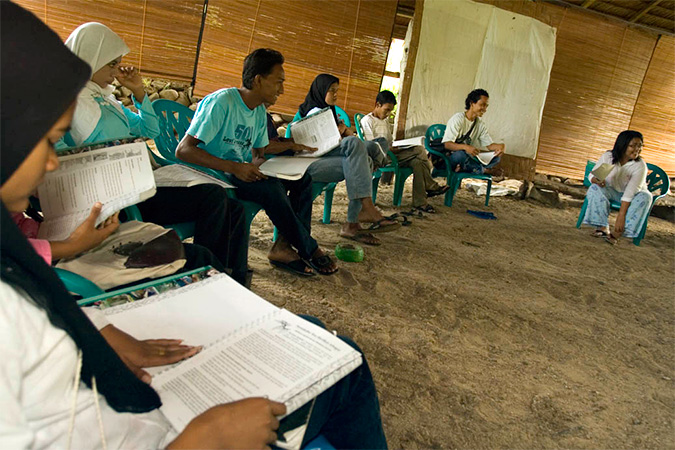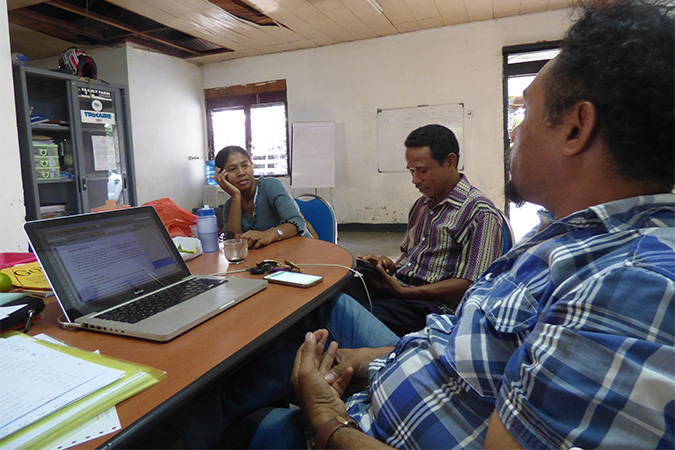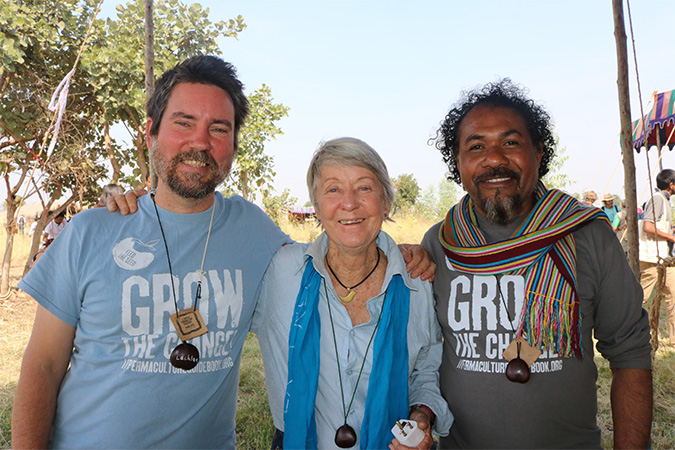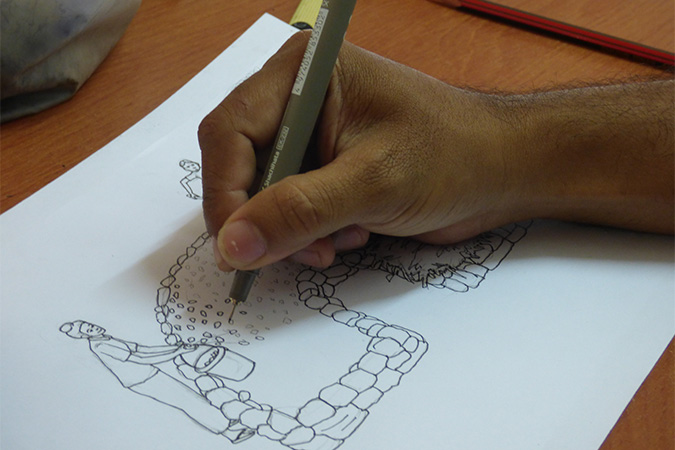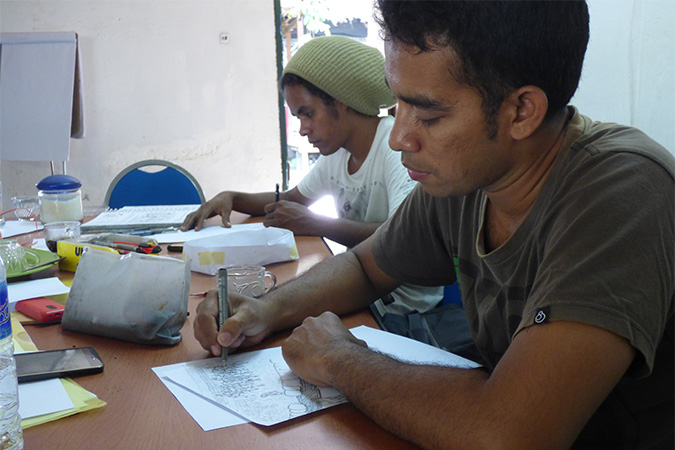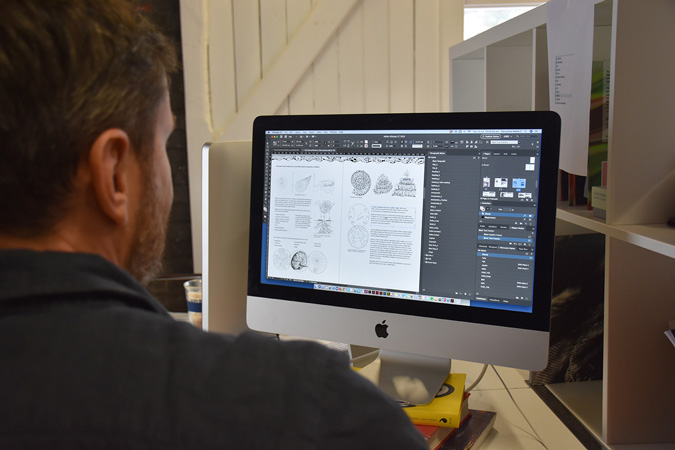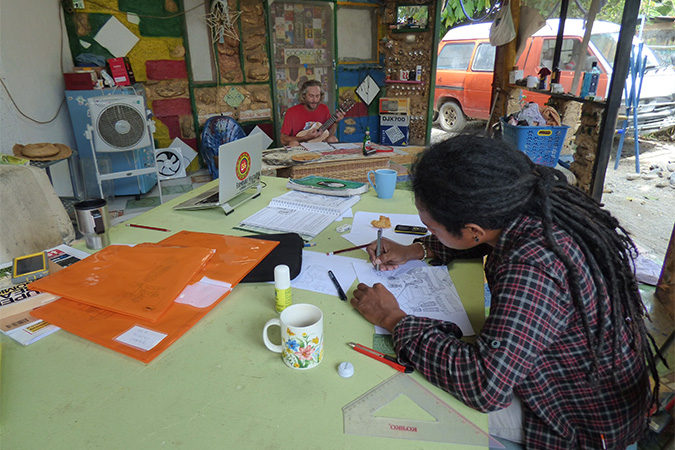History
The Permaculture Guidebook from Timor-Leste
The Tropical Permaculture Guidebook International Edition has grown from the Permaculture Guidebook from Timor-Leste. Produced by Permatil, a well respected Timor-Leste NGO, it was first published in 2006 and republished in the Timorese language Tetum and English in 2008. It has since had three re-prints and has had an unexpectedly large impact.
The Department of Agriculture in Timor Leste has issued a copy to every extension officer, (approx. 450) and the Department of Education is using the guidebook as a reference to develop the social science and culture national curriculum.
International NGOs such as GIZ, Mercy Corps, World Vision, Concern International, Oxfam Australia and GB, Care International, Trocaire and Caritas have all utilised the guidebook for various programs including sustainable agriculture, livelihoods, climate resilience and health. UNTL (University National Timor Leste) uses the guidebook as a sourcebook for teaching their sustainable agriculture program.
The original guidebook was also translated and adapted for Indonesia by IDEP Foundation who re-published the guidebook as well as uploading it chapter-by-chapter in English and Indonesian. More than 200 000 chapters were downloaded in 2 years!
Since publication, the guidebook has also been copied and used in many different countries, including Sri Lanka, Samoa, Nepal, Australia, Philippines, Solomon Islands, Uganda and Haiti.
There were no complete tropical permaculture books available at this scale and nowhere near enough literature available for creating sustainable households and communities as well as environmental restoration, especially for developing countries. After reviewing how the guidebook has been obtained and used over the last 8 years it has become clear that a new edition, revised and expanded, would fulfill a huge need for indigenous and non indigenous, urban, rural and remote communities in all tropical and sub-tropical regions.
We have seen the benefits resulting from the original guidebook in Timor-Leste and with this improved and updated edition we hope it can enable even greater positive impacts in Timor-Leste and replicate those benefits across all tropical regions.
The process
East Timorese NGO Permatil (Permaculture Timor-Leste) and Disruptive Media (Design and strategic communications for the NFP/NGO sector) are the developers.
The team who wrote, illustrated, edited and produced the original guidebook, worked together again for this new version. We took our experiences, lessons learned and successes from producing a guidebook in three languages, to improve the quality, technical accuracy and usability for this new edition. We also drew on our extensive experiences since completing the original, as well as 10 years of notes from expert feedback on the original content and layout.
For this edition renowned permaculture practitioner Rosemary Morrow joined the team, providing invaluable advice on content, structure and readability. Emma Coupland, a professional editor as well as experienced English Second Language (ESL) teacher added a final layer of proofing and grammar editing. Graphic design company – Disruptive Media managed our formatting, website and media style. Managing Director, Lyn Jenkin, also works with guidebook partner WithOneSeed and has extensive experience producing educational materials for developing countries, especially Timor-Leste where she has worked many times.
Our project commenced with the integration of 10 years of collected edits, updates and corrections into the text body and a comprehensive review the original Permaculture Guidebook from Timor-Leste with the authors, editors, advisor Rosemary Morrow and Permatil staff. This review included feedback from farmers, community groups, NGOs, Government agriculture and education staff as well as 9 years extra experience of the authors.
A content style and structure review took place involving all contributors, revising the format to enable the new edition to adequately cover the different sub-climates and geographical variations within the world’s tropical zones and include many new techniques and strategies. Based on the review findings, a strategic plan for each chapter was created including the addition of new chapters, chapter content, how to generalise the information and what the readers need to understand through reading it.
Following the reviews, the original content has been updated and rewritten. As per the original book, many sources were researched and referenced for each section and chapter. During the rewriting process any new illustrations needed were identified and listed. Working again with the incredibly talented original guidebook artists, the new illustrations were drafted, designed then completed. Mock up chapters in various formats were then created, with a preferred design style chosen and finalised.
The new international edition was then edited chapter-by-chapter, first by co-author Ego Lemos, then technical and proofing editors Julianne Hartmann and Rob Swain, and finally by grammar and proofing editor Emma Coupland. Finally, each chapter has been formatted, reviewed with captions added, edited, reviewed and edited one last time, then finalised and uploaded to the website. A long process!
